"Twinkle, twinkle, quasi-star
Biggest puzzle from afar
How unlike the other ones
Brighter than a billion suns
Twinkle, twinkle, quasi-star
How I wonder what you are." -George Gamow
The Big Bang is one of the greatest, revolutionary ideas in all of modern science, but it's also one of the most successful ideas as far as making predictions that have aligned with our observations of the Universe. Despite all of that, there are a whole bunch of people who'll read this (and more who won't) who aren't sure that the Big Bang is correct. Some people, in fact, don't even understand the definition of the Big Bang. I've written about this many times before, of course, including a great introduction to the Big Bang for beginners, and a couple of lengthy explanations that the Big Bang isn't, in fact, the beginning of the Universe, but I don't think I ever told you where it came from in the first place.
Let's go way back in scientific history to the 1940s. General Relativity had come along about 30 years before, replacing space, time, and Newtonian gravity with a more complete, comprehensive and geometrical picture of spacetime. Rather than gravitational forces, spacetime was a geometrical entity that was curved due to the presence of matter and energy, and all particles, both massive and massless, moved according to the curvature of that spacetime.
In 1923, Edwin Hubble discovered variable stars in the Andromeda Galaxy, and used their properties to deduce that Andromeda -- and later, many other spiral and elliptical galaxies -- lay far beyond the extent of our own Milky Way. The work he did with variable stars allowed him to figure out not only how far away these galaxies were, but also, by combining this with data obtained from the spectra of these galaxies, to find a curious relationship: the farther away a galaxy was from us (on average), the faster it appeared to be receding away from us!
In the context of General Relativity, this fit in perfectly with the concept of spacetime in an expanding Universe! If we imagine the galaxies as coins glued onto the surface of a balloon (or, for those of you who need a 3D analogy, raisins in an unbaked ball of dough), then what happens as you inflate the balloon (or as you bake the bread)? If you're one of the galaxies, you'll see each and every other galaxy look like it's speeding away from you, and the farther away a galaxy is, the faster it appears to recede!
But this has nothing to do with you, or your galaxy in particular. Every observer in any, arbitrary galaxy would see the same thing! This was worked out by a number of people in the late 1920s (Lemaitre) and, in more detail, in the 1930s (Robertson and Tolman, among others).
This was the starting point for where the Big Bang came from; George Gamow, working in the 1940s, had a very important realization.
The Universe wasn't just filled with matter. Yes, there was obviously plenty of matter, and as the Universe expanded, the amount of mass stayed constant while the volume increased, meaning that the matter density was diluting as time went on. This also meant that the Universe was denser in the past, of course. But the Universe was also filled with light: light from stars, light from hot plasmas, light from gravitational contraction, and light produced from the collision of particles.
And light -- a form of massless radiation -- behaved differently.
As the Universe expands, the number of photons stays the same, and so the energy density dilutes similarly to matter. But for radiation, its energy is defined by its wavelength, and as the Universe expands, the wavelength of light, according to General Relativity, also stretches!
Longer wavelengths means lower energies, so as we go forward in time, the amount of energy in radiation continues to decrease relative to the amount of energy in the form of matter. But in the past, the opposite was true!
Radiation was more important in the past, both relative to matter and also just absolutely. The light in the Universe was more energetic in the past. And, as Gamow realized, that has some very important consequences for matter.
Matter, of course, is made up of atoms, which in turn is made up of electrons and atomic nuclei. In our Universe today, there are only a very few select regions of space where the energy of photons are high enough to kick electrons off of atoms: active star-forming regions, where the hottest, youngest and newest stars can ionize the neutral atoms around them.
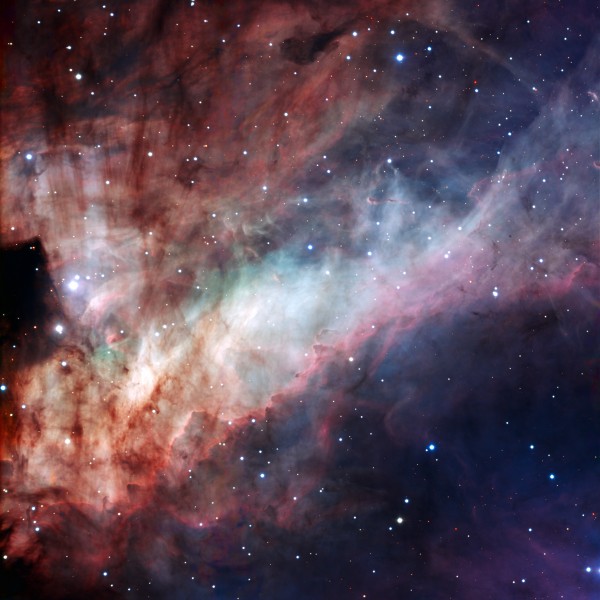 Image credit: ESO, the Omega Nebula, via http://www.eso.org/public/images/eso0925a/.
Image credit: ESO, the Omega Nebula, via http://www.eso.org/public/images/eso0925a/.
But in the young Universe, if you go back far enough, the photons/radiation had enough energy to prevent neutral atoms from forming at all! Imagine a Universe so hot and so dense that as soon as an electron and a nucleus found each other, a high-energy photon comes along and kicks the electron off, ionizing the system once again.
The Universe needed densities about a billion times higher than today and photon wavelengths about 1000 times shorter than today to make that happen, but according to General Relativity and the expanding Universe, this was all but inevitable.
But there's more! If we then go back even farther, to earlier times, shorter distances, and higher densities, there was a time when even atomic nuclei couldn't have formed. The Universe was so hot that it would have blasted any nucleus apart into the individual protons and neutrons that made it up!
And if there are more fundamental states of matter inside protons and neutrons (and we now know that there are), going back even farther -- to when the energies were even higher -- would have broken them apart, too!
But the Universe started from this hot, dense, state -- what Gamow called the Primeval Fireball (so much more awesome a name than the Big Bang) -- and expanded and cooled! For the first time, atomic nuclei formed (after a few minutes), and then, after hundreds of thousands of years, neutral atoms finally formed.
The explicit prediction of this hot Big Bang, or of the Primeval Fireball, would be that there was a cold, leftover, relic radiation in all directions, of the same cold temperature (just a few degrees above absolute zero), with a blackbody spectrum to it.
No other competing theory -- not Steady State, not Tired Light, not the Milne Cosmology, not the Plasma Universe, not the Godel Universe -- had this feature. And in the mid-1960s, that leftover radiation was detected!
Arno Penzias and Bob Wilson -- using the Holmdel Horn Antenna, above -- discovered the signature of this relic radiation from the Primeval Fireball, and in the early 1990s, the COBE satellite accurately measured the entire spectrum of the radiation to find out whether it was a perfect blackbody, as predicted, or whether there were any departures.
There were none. And check out those error-bars; 400-sigma statistical significance!!! Ever since, there have been no serious competitors to the Big Bang, and a plethora of other predictions, such as big-bang nucleosynthesis, the details of structure formation, the presence of pristine gas in the early Universe, and the increase of temperature with redshift have all been observed to be consistent with Gamow's theory's predictions.
And that's what it's all about!
- Log in to post comments

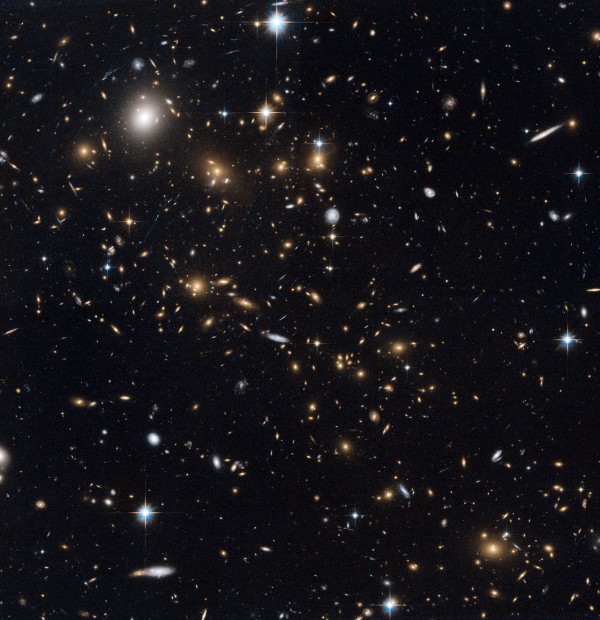
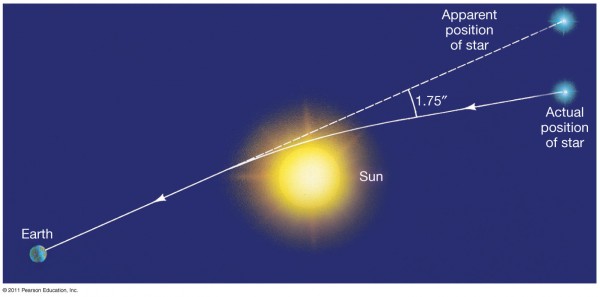
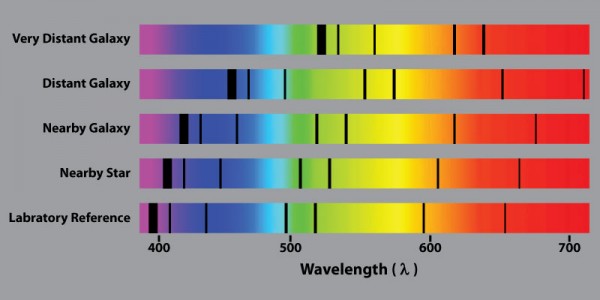

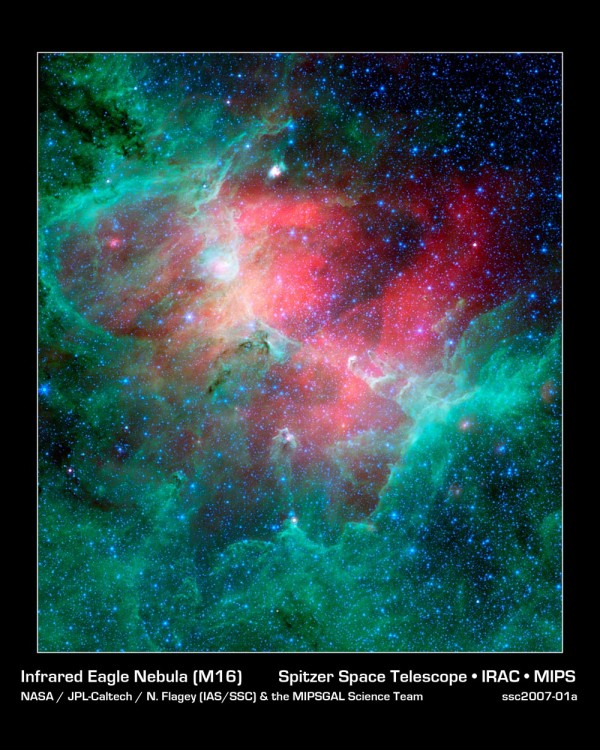

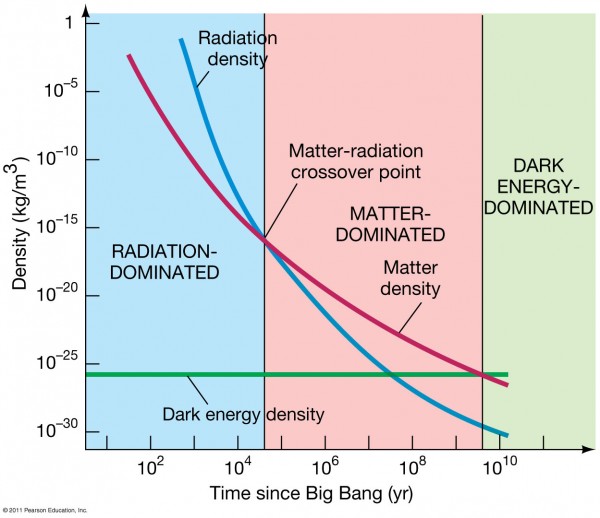

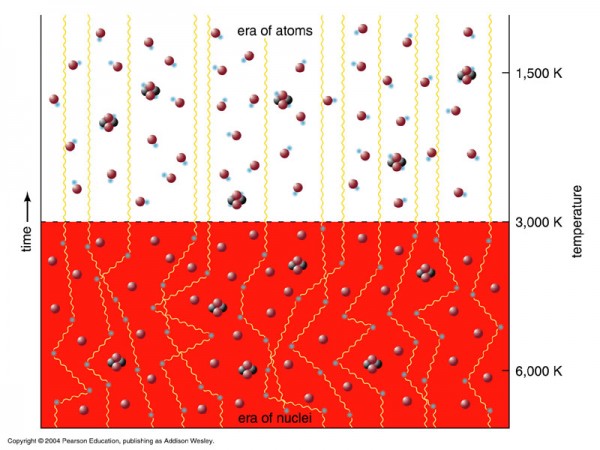
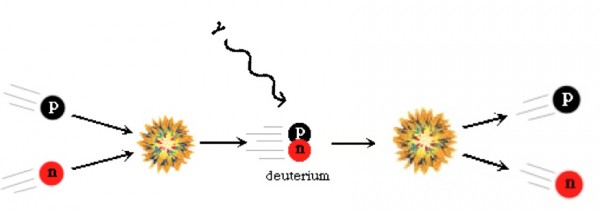

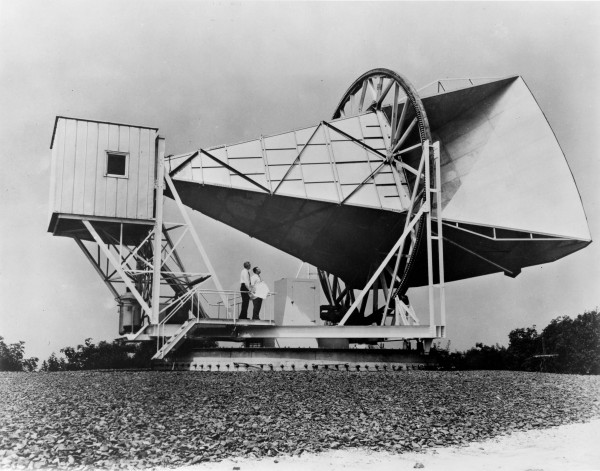

Game, set, match !
Disclaimer: My comment is a little bit out of place, but I had quite a lot of fun writing it. Sorry for being off topic a little bit ;-)
New theories are always like gambling, either reality gives you the win or you get hit by the hammer. Every scientist involved in the game of reality is (or should be) aware of it. In this sense, new theories about the universe are a bit like philosophy: you take a basic belief system (geometry, beauty, simplicity, etc.) and apply it on the universe. As a scientist, you say: I believe in these principles, the conclusion of that is [...] and I bet a significant portion of my time, reputation and career on that.
This game goes on since thousands of years now. The first modern scientific explanation about the nature of the universe was the existence of a god who created everything. At that time, people stated the universe was created as far back as anybody could think, some thousand years, which was an almost unimaginable amount of time at that point. At some point, this hypothesis of the nature of the universe has been proven wrong. And instead of accepting that the bet was put on the wrong horse, the people involved in this old theory of everything reduced their hypothesis to the point, where it can no longer be questioned by evidence. But some still dont accept the loss and cling to the original idea, and evidence is not able to convince them otherwise, because they say that their hypothesis includes the possibility that all the evidence is put there on purpose to test their personal belief in the original hypothesis. I do not want to judge this behavior, I just say what I observe, including the possibility that my interpretation of the observed is wrong. So there is why people dont believe in the Big Bang: they do not think that evidence is a good concept.
Coming back to more recent events. A similar development as described in the last paragraph is happening right now in the world of physics, as it happened many times over. The evidence of the expanding universe pretty much killed all alternative hypothesis, no matter how logical and beautiful they were. The same seems to be happening to SUSI, a beautiful theory that is about to die because evidence seems to occur that renders it either useless or plain wrong. So the philosophical approach of having a symmetric, and inherent beautiful universe seems to be going down the drain. Many people bet there career on that. Many bet all their time as a professional on that and it will be very hard for them to let go. But eventually, they will have to accept that. Luckily, these people believe in the concept of evidence. Even though they might play the denial game for some time. Which I find quite human.
Maybe a new philosophy of physics is about to emerge from that. Maybe the universe is not based on symmetry, but on fractals. Or maybe on a random foam like structure, without any principles that guide existence. Personally, I like the fractal idea, having some sort of symmetry and structure, but always be a bit off if you look close enough. Its hard to wrap your head around that, but I would be willing to bet on that idea, even if it might be wrong. But after all, I do not think of life as an analogy to a journey. Its rather a dance, and the goal is to have fun dancing life. I would like to dance on the fractal floor for the moment, seems to be very exciting! Not with the goal to find the truth, but just for the fun of it, and because its hell of a gamble with a huge price tag. And as long as you dont take it too seriously, the investment is not that high either.
Alan Watts said this: There seem to be only 4 or 5 serious philosophical questions.
1. Who started it?
2. Are we going to make it?
3. Where are we going to put it?
4. Who is going to clean up?
and finally: 5. Is it serious?
Personally, I do not think its serious. And physics is to me, the greatest adventure of mankind. And having discovered the big bang, is like stepping through the door of your childhood house for the first time in your life. All the wonders lay ahead, what are they going to bring? I love it, reality, bring it on! Evidence, do your best to prove me wrong, I invite you to dance with me. :)
Could someone explain out the following comment in a bit more detail
"Longer wavelengths means lower energies, so as we go forward in time, the amount of energy in radiation continues to decrease relative to the amount of energy in the form of matter. But in the past, the opposite was true!"
The only entity which has not been considered in this well presented explanation is that of Time. We cannot assume that Time is a constant (as the Theory of Special Relativity points out ). Time is related to Acceleration; Acceleration is related to Inertia; Inertia is related to Time; Time is related to Acceleration and the mathematical circularity is unresolved. Einstein resolved it by calling distance and time a single entity - Space-time. Time cannot be mathematically eliminated from the equations.The missing element is Dimension, which is defined by Acceleration pushing Velocity beyond the speed of light in the 4th dimension, whence we enter the 5th dimension. This is perfectly possible with massless particles such as photons. The constant between dimensions is not the speed of light, c, but the ratio of light speed to time, c/t. Refer my blog on the Theory of Dimensional Relativity.
"Time is related to Acceleration"
Acceleration with respect to another inertial frame.
But what other frame is there when you're considering the entire universe as the one frame?
"Acceleration is related to Inertia"
Wrong. You can have all the inertia you want and not accelerate.
"Inertia is related to Time"
Wrong. Your inertia doesn't change with time.
"Time is related to Acceleration and the mathematical circularity is unresolved. "
You misspelt "the mathematical circularity is made up".
The only issue with this is that at the end, one should say that Gamow and Lemaitre's idea of a BB is not the current picture.
The 40's version just doesn't work on it's own. The universe wouldn't form in the first place, it would just re-colapse into a black hole, then the monopole issues, homogeneity etc.. All of the "new" things cosmology discovered were the result of 40's BB theory not being what we see when we look up. But 90% of it is correct :)
A bit like calling the earth a sphere.
Not *technically* correct. But you'd have to be pedantic to say it's not spherical.
@3 vdgg
as the space expands, so does the wavelength, longer wavelength.. longer frequency... lower energy. You know.. E=plank's constant times frequency...
If the universe expands now, then in every point in the past it was smaller than it is now. Actually, the correct term is scale factor. Not size. We don't know how big it is now, so we don't know how big it was then. But we can calculate scale factor. If it was smaller in the past.. same amount of "stuff" was in, but in a smaller space. Think gas thermo-dynamics. Smaller the volume.. bigger the temperature.. which is basically energy. Thus if you have same amount of photons in a given space, and you compress the space, their wavelengths have to compress also.. thus frequency will rise, thus energy will be higher than it is today.
@ WOW
not so pedantic. Fireball BB fails on homogeneity immediately.
Earth deviation from circle is small in comparison. This would be more like saying earth made of molten rock and lava vs being a gas planet.
Gamow's BB is an explosion, a firecracker. Inflation BB, when everything know at present is taken into account is significantly different IMO.
Well, the "Fireball BB" was actually a caricature put forward by Hoyle's supporters to rubbish the Big Bang theory. It's no wonder a caricature fails.
But a caricature of the thing is not the thing itself.
Mind you, reminiscing over this makes me feel real old...
"Mind you, reminiscing over this makes me feel real old…"
hehehe :)
https://www.youtube.com/watch?v=UWs_zy1AgPo
"The sun is the same
In a relative way
But you're older
Shorter of breath
And one day closer to death ..."
as I grow older, i become more and more aware of this piece of wisdom :)
I was reading somewhere recently that the 'redshifts' of galaxies, instead of taking on "a smooth distribution of values" which would be more consistent with an expanding universe (as its cause), takes on discreet values. Is this right? And, if yes, what would be the implications for BB? Also, would it point towards a quantized space-time?
[If the question sounds naive to those experts in the field, plaese forgive me. i am just a layman in this regard] :)
I thought "Big Bang" itself was the disparaging name given by opponents, severely underestimating how much people -- especially physicists -- love explosions.
I would suggest that you check up on the idea that redshifts are quantized in any meaningful sense, Nova.
Instead of just accepting it, check whether it is verified.
Thanks Wow. It was here. See the answer given by William G. Tifft, a professor of astronomy at the University of Arizona [It's the third answer from the top and is carried over to the second page.]
Thanks again for your time. :)
i suppose the site doesn't accept html. "here": http://www.scientificamerican.com/article.cfm?id=is-time-quantized-in-o…
Nova,
Tifft was the originator of the "redshift quantization" idea, as far as I know, back in the early 1970s.
Galaxy and quasar surveys are now much larger, more comprehensive, more accurate, and extend out to much, much greater distances than they once did.
The most recent objective look that was taken at this problem that I'm aware of was the SDSS team's paper back in 2007, back from the fifth data release. (They're up to the ninth data release now, I think.)
You can access the paper here -- http://arxiv.org/abs/0704.0806 -- written by lead author Donald Schneider, who you may know (if you're an astro buff) as the co-discoverer (with Tonry) of the Surface-Brightness-Fluctuations distance indicator.
Figure 3 contains your answer: a definitive no, but you can also read the relevant text that I've highlighted here:
Hope that's the info you were seeking.
Thanks Ethan. Yes, i did as Wow told me to, and a brief survey of Wiki article on the subject was enough to tell me that it was Tifft's "pet" theory, if i may so put it. Thanks for taking your time to explain it fully.
And it's a great blog you have here. :)
Sure beats me why Einstein didn’t predict the expanding universe. All he had to do was lose the dust and think of the energy-pressure diagonal in the stress-energy tensor, and about his own sentence: “the energy of the gravitational field shall act gravitatively in the same way as any other kind of energy”. Space has just got to expand. It can’t not expand.
Mind you, I’m pretty sure that he would worked back to a cold motionless timeless early universe. The light and heat would have come later, when something changed to unleash the expansion. Thereafter, the CMBR photons don’t actually lose any energy. The expanding universe is something like pulling away from a black hole. Photons climbing out of the gravity well don’t lose any energy. Photons falling in don’t gain any energy either. You can work this out easily enough: turn a 1kg body into light, then throw that into the black hole. Its mass increases by 1kg. Conservation of energy rules!
PS: please delete my near-duplicate comment above. I left a load of junk at the bottom.
Nova: If there were more people like you, then the world would be a nicer, smarter, less crack-potty place.
Instead, we get John Duffield who shouts "Conservation of Energy rules!" while simultaneously completely ignoring gravitational potential energy. Just like before. Just like he was already corrected on, repeatedly, though obviously without effect. No thought or reflection. Just obliviousness as a form of intellectual self-defense.
Good on you, Nova. You ever so slightly warm my cynical soul.
It's a little better for your own confidence in the world to check yourself on what is *generally accepted*. Though that does not proof the assertion wrong, you know enough now to consider the probabilities.
Whereas if I were to tell you "it doesn't", even if I pointed to a recent blogpost by Ethan on the structure of the universe (with the radial axis being "red shift", all you'd really have is something else you'd been told.
And how the heck would you know I was more reliable than your earlier informer?
You wouldn't.
The added advantage to checking is that something you *tried* to work out yourself sticks better when you get help with it. Just being told sticks no better than any boring school lesson...
...prove...
It's the caffeine...
@CB
Glad to be of service, sir! I have a "feudal" soul. ;)
@Wow
There's man all over for you, blaming on his boots the fault of his feet. Hehe.
Just kidding guys. Thanks for your help and kind words. :)
@19 John
"Sure beats me why Einstein didn’t predict the expanding universe."
he did. check the books. that's why he introduced lambda in the first place. In order to have static universe instead of expanding one... or contracting.
As to the "Big Bang" of the Observable Universe, hey, no problem. Just the inflaton field doing its quantum dance (if I understand what you have said multiple times in explaining the Big Bang in terms of reheating); dropping down into a valley where the field's potential energy trades itself off for space, gravity, photons / other radiation particles, fermions and certain bosons playing trampoline on the Higgs field, along with some kind of residual dark negative pressure. A zero-sum net energy transaction; but as with any good meal, separating the flavors and textures on the plate makes all the difference. Lowers the entropy, so some work and activity can happen.
What I want to know is, does Eternal Inflation imply a "Bigger Bang" behind the Multiverse? You've explained chaotic inflation a number of times, with your blue expanding boxes with some red X's. Was there a primal blue box, an initial trampoline jump on the inflaton field which set off an eternal process of fractal-like universe creation (i.e. the blue boxes with X's begetting more blue boxes with X's)? I saw a note somewhere indicating that Alan Guth has mulled over that possibility. Or is it to be swept under the rug of infinities and eternities, "beyond here lies dragons"?
Oh, not now but for another time -- how's the whole dark matter search going? I thought that SUSY wasn't doing so well lately, so how are axions faring these days? I like particle / fields that solve a limited, well-defined Standard Model problem as the Higgs did. Hoping that ADMX hits paydirt, perhaps a last taste of American glory in the world of extreme hi/lo energy physics.
Thanks again to Ethan for providing a feast of food for thought about the cosmos. Wish that I had the time and neuron capacity to understand the math. Maybe in another life (or another Multiverse).
I'm half-asleep so this may come out a mess, but here goes:
Sinisa's analogy at #8 is excellent. Quantity of gas in a given volume of space. The space expands, the gas cools down; the space contracts, the gas gets compressed and heats up.
---
Since a bunch of folks here have been expounding on their personal TOEs, I'll ask a question that by comparison seems downright tame.
Ethan: "...there was a time when even atomic nuclei couldn’t have formed. The Universe was so hot that it would have blasted any nucleus apart into the individual protons and neutrons..."
Reminds me of muons, that are the breakdown product of pions, and can be broken down into one electron plus two neutrinos. All of these "virtual particles" arise from the vacuum and then disappear back into it.
OK, so the question is: Imagine a hypothetical observer at the point in time when neutral atoms (or earlier, atomic nuclei) were forming and then getting blasted apart by high-energy photons. Would that observer see something roughly comparable to what we see when we observe virtual particles popping in and out of existence from the vacuum?
And if that's the case, then is it possible that our present observations of virtual particles may involve a similar phenomenon that we don't yet know how to measure?
OK, corrections & rotten tomatoes welcome;-)
---
Sinisa's #9 is also spot-on.
An explosion begins from a single point, for example a stick of dynamite detonated by a civil engineer building a road through a mountain pass. If you watch closely you see the point at which the explosion originates.
But inflation is more like the explosion occurring everywhere simultaneously: not "from" one point (e.g. the dynamite) "into" open space, but at all points at once (as if the rock that's being blasted just turned into a cloud of sand).
"Would that observer see something roughly comparable to what we see when we observe virtual particles popping in and out of existence from the vacuum?"
Quite different. The virtual particles are called such because you have to put energy in to make them appear for long enough to see their effect, and entering that energy then makes them "real".
That's what the LHC and other colliders DO.
The flux in the case of a hot universe is more like the existence of excited (non-ground) states in a warm gas like our atmosphere. Just because CO2 will lose its excited state through collision (or, higher up, radiation) doesn't mean the CO2 excitation state is "virtual". You can see the effect. It's called, in our atmosphere, the greenhouse effect.
It is this "these things are excited states" model that gives rise to string theory: the particle soup is just a more energetic "excited" form of the base version.
And as the energy in the string is lost, the chance of putting enough energy into that string to do it again drops further and further into "No chance".
But the string was always there. Not virtually, really.
In my ADULT lifetime I watched 3 theories emerge and become orthodoxy; Continental Drift (ca; 1960 was considered ridiculous), Comet killed dinosaurs, Big Bang ( Hoyle had many believers up through 60's). With that background, I am not prepared to accept AGW as 'settled science.' ..
Sigh.
Bill, you're hopeless. You've not HAD an adult life.
Please stop feeding bullshit. Just because you've learnt the taste of it, no call to foist it on others and it comforts you to live in a world where your political opinions beat out reality.
Wait...
Based on your experience witnessing new theories that were initially hard to believe but ultimately not only made a lot of sense but also had a ton of raw empirical evidence to back them up... You're NOT going to accept the new theory that was initially hard to believe but not only makes sense it also has a ton of raw empirical evidence backing it up?
Seems pretty silly to deliberately chose to be on the losing side of history, but whatever floats your boat, man.
Thinking isn't a denier strong point.
If it don't fit on a bumper sticker, they're too dumb to remember that much.
The group think of your typical responder on this blog is nauseating and, quite frankly, depressing. Endless recitals of secular humanist mantra and quasi-intellectual and foamy-mouthed rationalist pablum excoriating people of faith and those who dare voice skepticism of "settled" science or "consensus" mongering sycophants who just want to sound smart is more than a mere mortal can take. The conceit on display here is as anti-intellectual as it gets. Perhaps, as an intellectual high colonic, you can illuminate the dreadful black hole in which the arrogant oligarchs of modern physics have finally found their singularity: M-Theory. Sorry...but you're well past the event horizon- no coming home. I'm hopeful, that someday, the soulless denizens (and their gullible followers) of modern theoretical physics can pry themselves away from their own egos and recognize that the extent of what they truly know about reality of the universe is most accurately measured on the Planck scale. The hubris is astounding.
Ethan,
I wonder about the image #8 (the graph of density vs time): radiation density changes over time, matter density changes over time, why wouldn't dark energy density also change in time? Are there any theories yet about what process enables dark energy density to remain the same even though space is expanding? I understand we observe the expansion and somehow deduce it to be caused by dark energy and therefore conclude that dark energy is getting more intense and therefore more dense per unit of volume, but how do we know that the line shown in image #8 is as straight as shown?
Yeah, how DARE people admit that just because they don't know how something happens, it MUST be *your* god, huh?
Listen, fkwit, do we come over to your preacherbot brainwashing parlour and yell "GOD DOES NOT EXIST! IT'S ALL A SCAM!!!! LEARN TO THINK!!!"?
No?
THEN WHY THE FUCK DO YOU DO THAT HERE????
@Sinisa #24 re: "he did. check the books. that’s why he introduced lambda in the first place. In order to have static universe instead of expanding one… or contracting".
I have. And I'm left thinking "come on Albert, you've added this balancing pressure term to prevent collapse, you surely must see it can't be balanced on a pencil point. And that a gravitational field alters the motion of light etc but doesn't suck space in".
@Tihomir #34 re: "wouldn’t dark energy density also change in time?"
I'll be interested to see what Ethan says to that. Because if there's one thing I trust, it's conservation of energy. So I suspect dark energy density does reduce over time, and that dark energy is responsible for the expansion of the universe rather than the increasing expansion of the universe. See http://arxiv.org/abs/0912.2678 . I don't think Milgrom's got it right, but look at page 5 and note this:
"We see that the modification of GR entailed by MOND does not enter here by modifying the ‘elasticity’ of spacetime (except perhaps its strength), as is done in f (R) theories and the like."
Sounds to me as if the expansion of the universe is increasing because space is getting "weaker".
BB is a good attempt to explain the present state of the Universe. However, it is just a MODEL! There are more to be known and surely better models will appear when we have BETTER PHYSICS. One thing that Cosmology heavily depends on is the ABSOLUTE CORRECTNESS of the GENERAL THEORY OF RELATIVITY!!!! This is a theory which, as far as we know, in its present form is not compatible with QFT, although many Cosmologists use argument from QM and QFT to explain lots of things related to BB!!!!! We certainly need a MUCH MORE CONSISTENT and POWERFUL PHYSICS before we can talk SERIOUSLY about how the UNIVERSE has come into existence and what will be its FATE.
Just remember, people will take you more seriously if you randomly capitalize words.
@34 Tihomir
"...why wouldn’t dark energy density also change in time?"
It does change with time. Inflation theory is just that. A scalar field which had much higher value during the fast exponential expansion of the very early Universe. The drop in potential of that field once exp. inflation ended gave rise to all of the elementary particles.
So the field settled to it's lowest energy state which is what we call Dark Energy. Or according to some other theories we are currently in just another false vacuum epoch and the filed will drop again..
You could opt and say that lambda is really a constant, unchanging from t=0, but then inflation field is another unknown and you have now 2 unknown undetected fields to cope with.
@ 36 John
" ...you surely must see it can’t be balanced on a pencil point."
and that's why he abandoned the idea and trusted observational data accepting that the universe is expanding and his theory is ok. What is today called lambda is different from his lambda. Similar, but different.
@39 Sinisa:
I wasn't asking IF dark energy density changed over time. Instead, I was wondering what proof / theory / explanation there was for Ethan to present us with the graph in the image #8, where the green line, representing the dark energy density, remains constant all the time. Ethan is a cosmologist and I guess he would know.
As for your comment #39, Sinisa, you've written several comments in this blog I would agree with, but this #39 isn't one I find clear or even pertaining to the constant value of the green line I mentioned.
"One thing that Cosmology heavily depends on is the ABSOLUTE CORRECTNESS of the GENERAL THEORY OF RELATIVITY!!!! "
No it doesn't. Any more than an ocean voyage depends on the ABSOLUTE CORRECTNESS of a SPHERICAL EARTH.
The earth isn't a perfectly spherical ball, but the assumption of a nautical mile based on a spherical earth is good enough to get you into harbour.
@ Tihomir
It's constant if you think of it as vacuum energy density. From QFT. The energy density of just zero point harmonic oscilations.
If it's that, then it's constant.
This article brought up a question I have been thinking for some time. As I have been reading this blog with keen interest for a couple years, I figured Ethan would be best to answer:
The universe is said to be expanding at an ever increasing pace. This seems to be based on what we observe, which is technically in the past. Is it possible that the universe is actually slowing down? What we are observing in the past is a universe swiftly moving apart but slowing as we reach the modern age? If this is not the case, what is the physics of the universe I am not understanding. Thanks.
@ James L
Yes, it's entirely possible that at present Universe is slowing down. Seems unlikely, but it is in fact possible.
We can only detect acceleration (due to small effect) at distances about couple of hundred million light years. Thus, that same amount of time in the past.
What is Universe doing right at this moment is unknown to us.
What someone is doing within our line of sight at 200m right this moment is unknown to us.
But we don't use that to say we cannot see what they are doing, do we. Even though "doing" means what actions are they taking *at this moment*.
@ James L
p.s. Actually, not knowing what it's doing now isn't that problematic since all current theories converge on present. It looks what it looks like now.
The differences are in the past. A bit further than we can observe at the moment. What those most distant supernovae are doing in effect determines what the universe is now. I'm guessing in couple of more years we'll be able to observe SN 10-11 billion light years in the past and will then know which of the models is correct.
A Universe which accelerates then decelerates expansion would imply some new weird oscillating field. Don't think that's the case.
Late in this discussion, but I hope someone might help me with this question. The picture above shows a bell-shaped timeline of the expansion of the universe from a point source. The flared out part of the bell coming after the BB conveys that inflation picked up AFTER the BB. Now, if I understand correctly the current favored model for the cause of the BB is the Inflationary Big Bang model, although it goes by other names too. Please correct me if I am wrong but I thought the IBBM posits an expanding bubble of dark energy just BEFORE the BB. This is considered to be inflation. Then the BB occurred as a kind of energy transfer event.
If this is correct then the drawing should be changed to convey inflationary expansion before the BB. Correct?
Inflation is after the big bang, but the impetus for that inflation may have been so close to the "beginning" that differentiating the two events is canonically and by definition impossible.
Indeed, since the physics breaks down before you can wind back right to the EVENT of the big bang, the physics we use to determine that process is, likewise, invalid.
Just like newtonian mechanics doesn't hold at the atomic scale (nor, indeed, the fluid nature of water on the scale of the animalcule: water is not a fluid at small scales)
@ Marcoli
it depends what you (someone) means by big bang. If by that you mean the begining of our universe (or t=0) then inflation happened just after that t=0.. or maybe it always was and there isn't t=0 (eternal inflation).
If on the other hand you consider BB to be the moment "stuff" came to be, then that happened after inflation.
I thought the BB was considered to be when 'stuff' came to be, and I hope that view is considered to be generally acceptable. The stuff would not be definable as quarks and electrons and forces at first, those would sort out later with expansion and cooling.
IF I understand the Inflationary Big Bang Model (and I am sure I do not as I am a mere biologist) then what I thought was considered the BB was the instance when inflationary expansion underwent an energy transfer, resulting in the hot formation 'stuff' in the universe. The universe (or our local part of it) then went on expanding with inflation for a time, pre-structured to do so since it was formed by inflation which came just before.
@ Marcoli
" The stuff would not be definable as quarks and electrons and forces at first"
- yes, the stuff would be all elementary particles.
" then what I thought was considered the BB was the instance when inflationary expansion underwent an energy transfer, resulting in the hot formation ‘stuff’ in the universe."
- as far as inflation and the drop of inflation filed, you are correct. As for calling that BB.. again, some do. But not all. i.e. if you read wiki's article on BB, there BB is a term used for t=0 and inflation happens after it. It really depends on the author, because some still use BB in terms of 40's picture where it is the beginning of everything.
"The universe (or our local part of it) then went on expanding with inflation for a time, "
-mmm.. this is a bit sketchy. If inflation field undergoes a drop and creates all the particles in process, then you don't have exponential inflation any longer. The only expantion happening is that of metric from GR. Inflation is over once energy is transferred to matter.
p.s.
one thing is important to note in terms of inflation, and that's time. Image no1. is a bit misleading. We don't know how long inflation lasted. We do know the minimum time needed for inflation to give homogeneous universe like ours. I think it's 30 or something "foldings". But it could just as well made 3000 foldings before it dropped. So inflation of just spacetime could have lasted half a second or 3 years.. or unknown amount of time.
Aye, the "age" of the universe is "project the size of the universe back in time and see where it goes" which we discovered ends in a point. When we extrapolate that rate back into the past, we get ~14 billion years.
However, that extrapolation is based on an assumption that the rate of expansion was linear and constant.
However, I think it better and clearer to point out that the "pre inflation" bit is the bit that could have lasted indefinite time. The longer inflation itself took place, since the physics we know mostly applied, the bigger the bit of the "original" universe is compared to ours. I.e. the longer inflation took place, the longer it took to make the universe as homogeneous within our light curve as we see. Therefore the larger the universe beyond our light curve.
@#52: Thank you Sinisa. That helped me sort out some key details.
@Sinisa Lazarek
you said while answering someone's query: "as the space expands, so does the wavelength, longer wavelength.. longer frequency… lower energy. You know.. E=plank’s constant times frequency…"
but as the space expands so the energy need to be equally distributed within two points (who are receding away) so longer will be the wavelength and the frequency will be shorter (no. of cycles/ second, are getting lesser and lesser)
siddharth,
Frequency and wavelength of light (or any wave) are inversely related. Their product is the speed of the wave. Therefore, if the wavelength increases due to spatial expansion, the frequency must decrease, and therefore the energy decreases as well.
Equations:
c = wavelength x frequency
E = h x frequency = h x c / wavelength
I studied pictures of a hole in the cosmic background, I have concluded it was once a white hole or worm hole. that would also account for a region in the cosmic background where matter looks like it has been compressed.